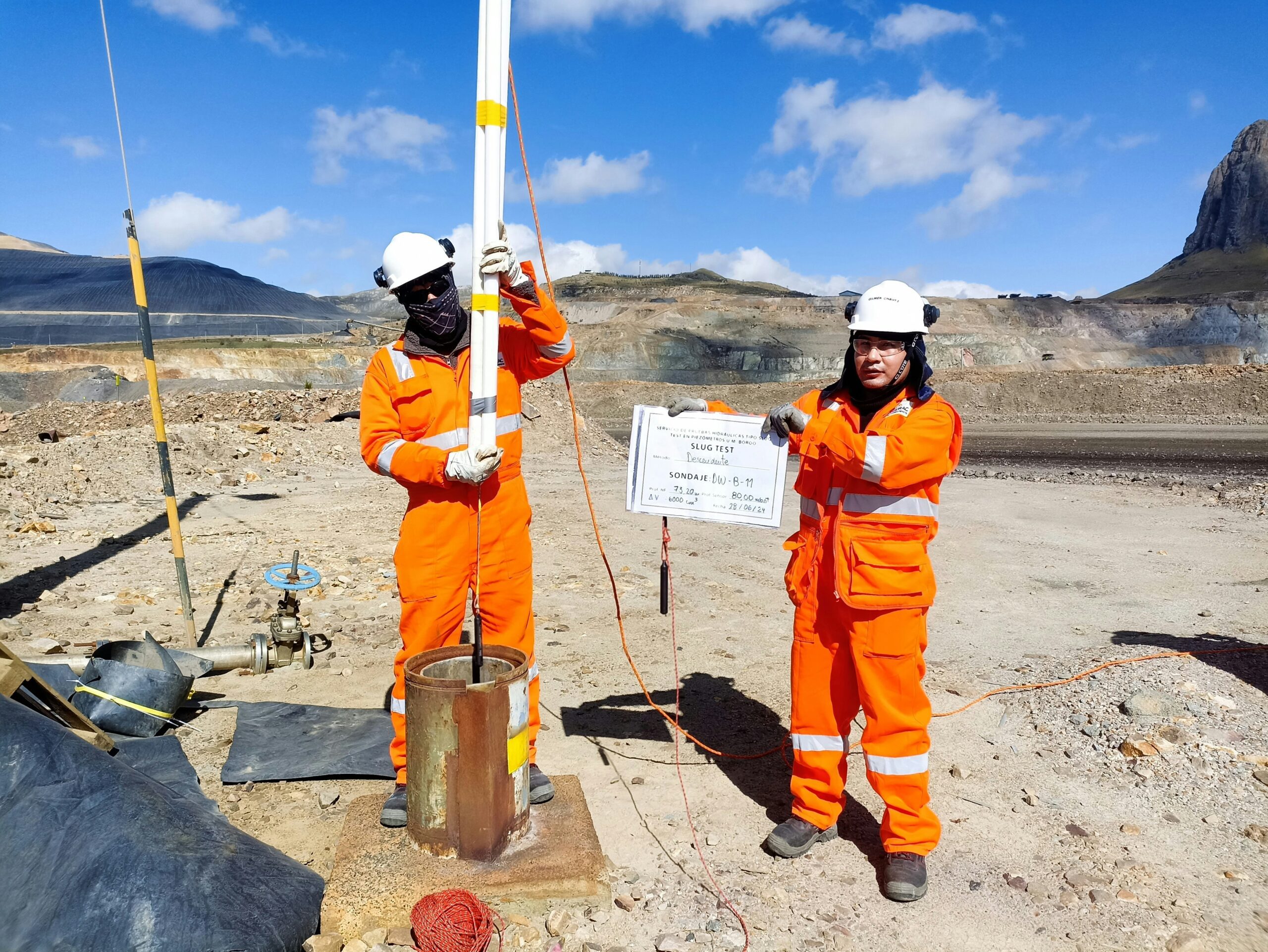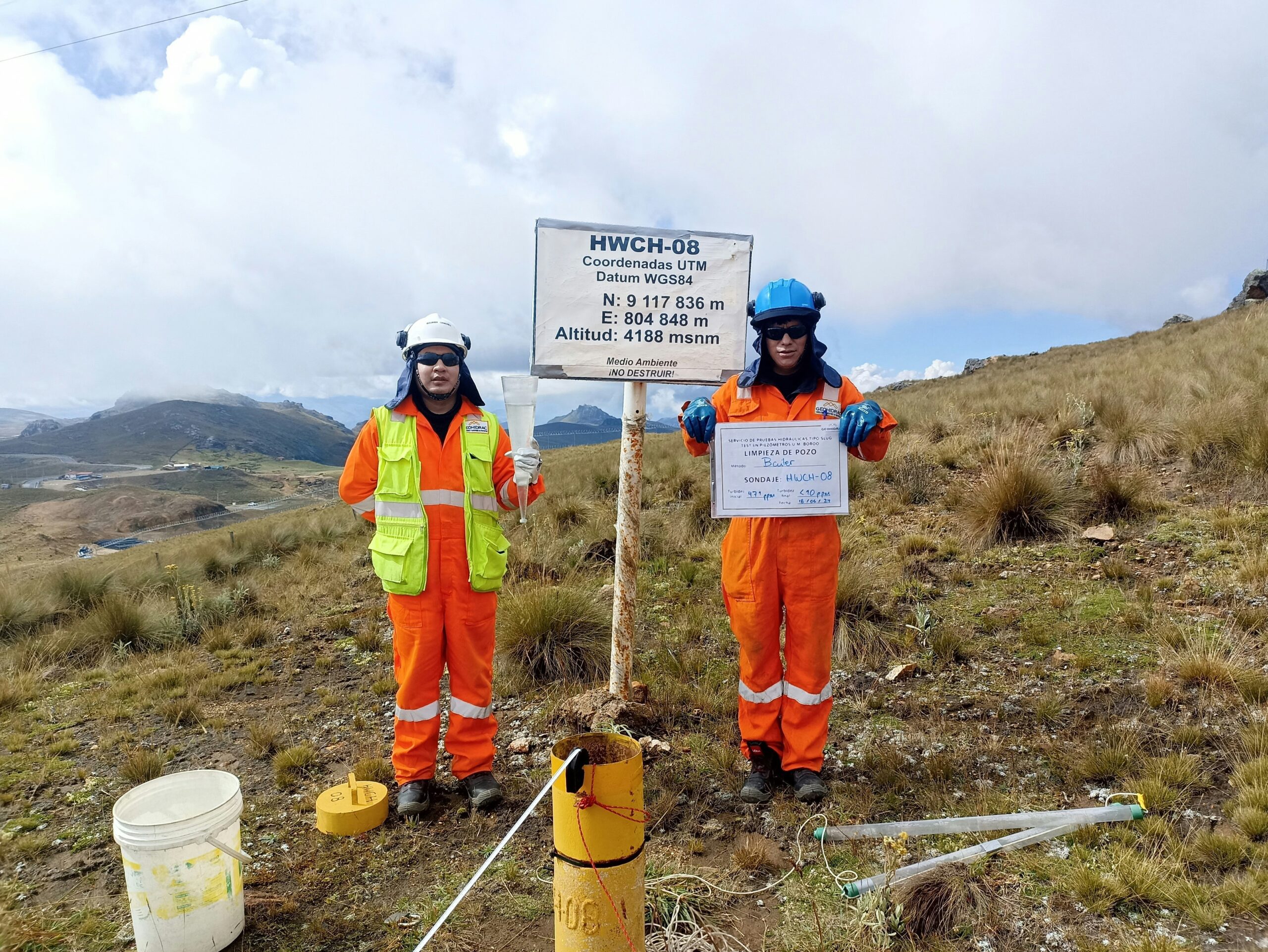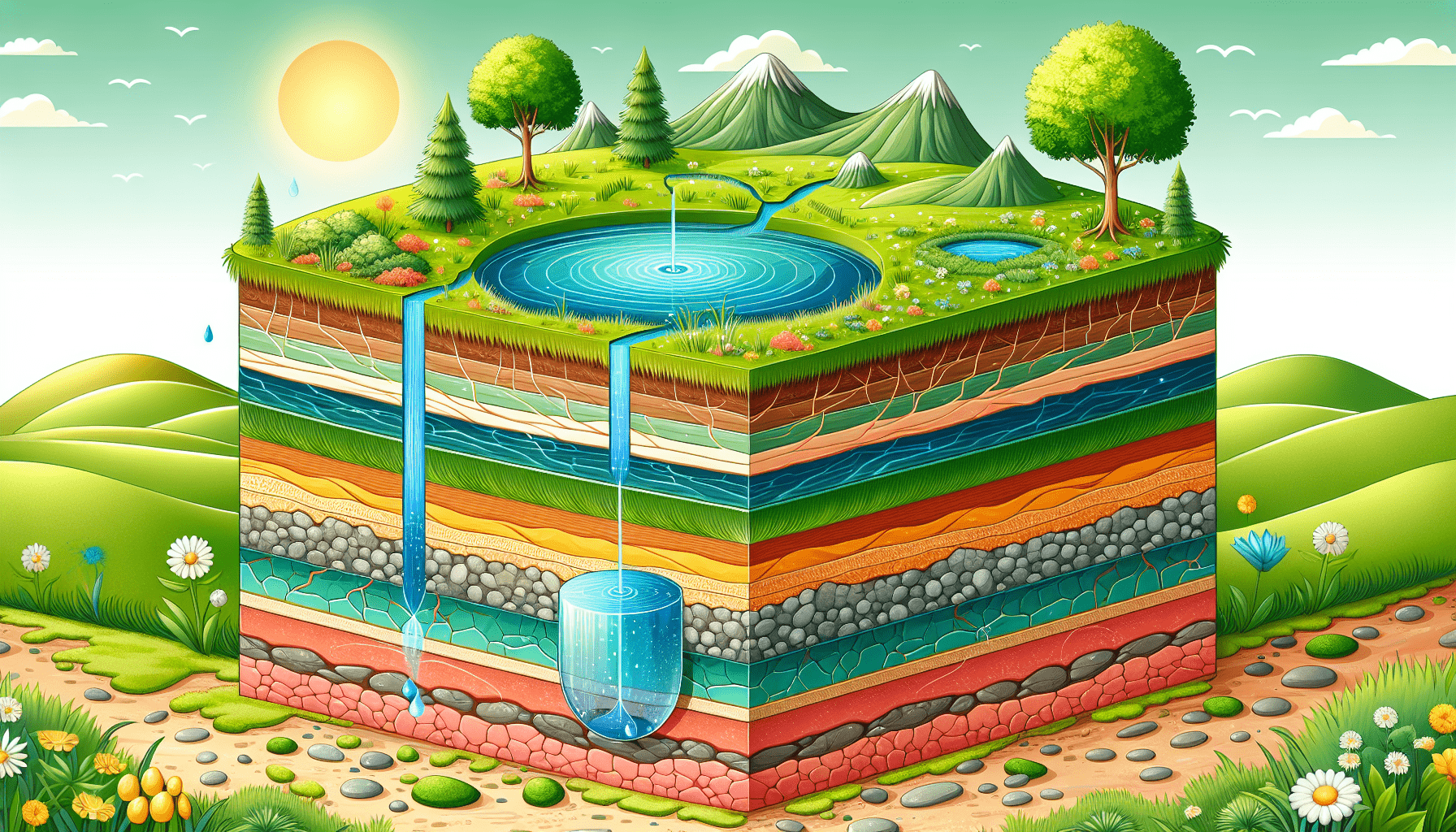Have you ever wondered where the water from your well comes from? Or considered how our cities and farms are able to access water even when river levels drop? The secret often lies beneath your feet — it’s called groundwater. By understanding groundwater, you can gain insights into essential and sometimes hidden resources that sustain our daily lives.

What is Groundwater?
Groundwater is the water found underground in the cracks and spaces in soil, sand, and rock. It is stored in and moves slowly through geological formations of soil, sand, and rocks called aquifers. It is a crucial resource that supports a variety of human and ecological systems.
Aquifers: Nature’s Reservoirs
Aquifers are essentially nature’s way of storing water. They are underground layers of water-bearing rock or materials like gravel, sand, or silt. There are two main types of aquifers:
Confined Aquifers: These are bounded by layers of impermeable rock or clay, which can restrict the water flow. The water here is typically under high pressure.
Unconfined Aquifers: These are more accessible as they have permeable layers that allow water to flow in and out more freely. This type of aquifer is directly affected by surface water seepage.
How Does Groundwater Form?
Groundwater forms through a process called infiltration. Rainwater or water from other sources such as rivers and lakes seeps through the soil and porous rock layers to reach the aquifer. During this journey, many layers of soil and rock act as natural filters, ridding the water of impurities.
The Importance of Groundwater
Understanding groundwater is essential for multiple reasons. From providing fresh water to homes and farms to supporting ecosystems, groundwater has a significant role in various aspects of our lives.
Human Consumption
For many households, particularly in rural areas, groundwater is the primary source of drinking water. Around the world, nearly 50% of the drinking water comes from groundwater sources.
Agriculture and Industry
Agricultural activities and various industries rely heavily on groundwater for irrigation, processing, and cooling systems. Without groundwater, maintaining the levels of food production and the operational efficiency of industries would be extremely challenging.
Environmental Support
Groundwater feeds into lakes, rivers, and wetlands, helping to maintain these natural habitats. During dry periods, groundwater serves as a crucial buffer, keeping water systems balanced and ecosystems thriving.
How is Groundwater Accessed?
Accessing groundwater typically involves drilling wells into aquifers. Let’s look at some of the key methods:
Wells
Wells are one of the most common ways to access groundwater. They are holes drilled into the ground to reach an aquifer. Wells can be categorized into three main types:
| Type of Well | Description |
|---|---|
| Dug Wells | Shallow wells, often less than 30 feet deep, dug by hand or machinery. |
| Driven Wells | Pipes driven into the ground, usually 30-50 feet deep, ideal for small uses. |
| Drilled Wells | Deeper wells, ranging from 100 to 1000 feet, used for larger-scale access. |
Pumps
Different types of pumps are used to bring groundwater to the surface. Common pumps include hand pumps for shallow wells and electric or diesel pumps for deeper wells.
Groundwater Quality
Groundwater quality is generally good due to the natural filtration process it undergoes. However, contamination can still occur from various sources.
Natural Contaminants
Some contaminants originate from natural sources like minerals present in the geological formations. These can include substances such as arsenic, fluoride, and radon.
Human-Induced Contaminants
Agricultural runoff, industrial waste, and improper waste disposal can lead to groundwater contamination. Common pollutants include pesticides, nitrates, and heavy metals.

The Water Table
The water table is a crucial concept in understanding groundwater. It represents the upper level of an aquifer, or the zone of saturation. When you dig into the earth and reach the first point where the soil is fully saturated with water, you’ve hit the water table.
Water Table Fluctuations
The water table isn’t static; it changes based on various factors like precipitation, seasonal changes, and human activities. For example, excessive pumping can lower the water table, leading to issues such as dry wells and land subsidence.
Groundwater Recharge
Recharge is the process through which groundwater is replenished. This usually occurs naturally when rainwater or surface water seeps into the aquifer. However, human activities like irrigation practices can also contribute to groundwater recharge.
Importance of Recharge Areas
Recharge areas are specific zones where water infiltrates into the ground, thus replenishing the aquifer. Protecting these areas is vital to ensure a sustainable groundwater supply.

Groundwater and Climate Change
Climate change has a significant impact on groundwater resources. Alterations in precipitation patterns and increased incidences of extreme weather can influence groundwater levels.
Droughts and Groundwater
Droughts can severely impact groundwater levels, as reduced precipitation leads to less infiltration. Sustained droughts can thus reduce groundwater availability, affecting drinking water supplies and agricultural activities.
Floods and Groundwater
Paradoxically, floods can also affect groundwater negatively. Excessive rainfall can lead to rapid infiltration, which might not always be beneficial. In some cases, it can lead to contamination of aquifers with pollutants from surface runoff.
Groundwater Management and Conservation
Managing groundwater is crucial to ensure that it remains a viable resource for future generations. Here are some strategies:
Sustainable Pumping
Over-extraction of groundwater can lead to a host of problems including falling water tables and land subsidence. It’s essential to monitor and regulate how much water is extracted to maintain a balance.
Artificial Recharge
Artificial recharge involves human interventions to enhance the natural process of groundwater replenishment. Techniques can include constructing recharge basins, using treated wastewater, and rainwater harvesting.

Groundwater Laws and Policies
Groundwater management is also governed by various laws and regulations that aim to protect this precious resource.
Regulatory Frameworks
Different regions have specific laws regarding groundwater use and management. These regulations might include the issuance of permits for drilling wells and limits on extraction volumes.
Community Involvement
Community-based management practices can be effective in maintaining sustainable groundwater usage. Informing and involving the community ensures a more holistic and cooperative approach to groundwater management.
Challenges in Groundwater Management
Groundwater faces several challenges that need addressing for its sustainable management.
Contamination
One of the most significant challenges is contamination. Ensuring clean groundwater involves both preventing and mitigating pollution from diverse sources like agricultural activities and industrial waste.
Over-extraction
Over-extraction can lead to a drop in the water table, causing wells to dry up and potentially leading to land subsidence. It’s crucial to maintain consumption levels within sustainable limits.
Data Scarcity
Accurate and comprehensive data on groundwater levels and quality is often sparse. Without this data, effective management and policy implementation become much more challenging.

Innovations in Groundwater Management
The good news is that innovations in technology and practices are helping to better manage groundwater resources.
Smart Sensors
IoT-enabled smart sensors can provide real-time data on groundwater levels and quality. This information can be used to make data-driven decisions for sustainable management.
Artificial Intelligence
AI and machine learning algorithms can predict trends in groundwater usage and recharge, providing valuable insights that can guide policy and management strategies.
Advanced Filtration Techniques
New filtration technologies can help in the purification of contaminated groundwater, making it safe for consumption and use.
Groundwater in the Global Context
Groundwater is a critical resource globally, and its importance varies from region to region.
Developing Countries
In many developing countries, groundwater serves as a vital source of potable water. However, issues like over-extraction and contamination are more prevalent due to insufficient regulation and management.
Developed Countries
Even in developed countries, groundwater plays a crucial role. It is extensively used for agriculture, industry, and municipal needs. The focus here is often on sustainable management and advanced technologies for replenishment and purification.
Future of Groundwater
Ensuring a sustainable future for groundwater involves a combination of effective management, innovative practices, and community involvement.
Policy Changes
Future policies need to be more adaptive and responsive to changes in climate patterns and human activities. This could involve stricter regulations on extraction and pollution.
Education and Awareness
Raising awareness about the importance of groundwater and the need for its conservation is essential. Educational programs can empower communities to participate actively in groundwater management.
Technological Advancements
Continued advancements in technology will play a critical role. From better monitoring to more efficient use and artificial recharge measures, technology can offer sustainable solutions to groundwater challenges.
Conclusion
Groundwater is an invaluable resource that supports life, agriculture, and industry. Understanding its basics, from the nature of aquifers to the importance of recharge, helps in appreciating its critical role in our daily lives. Challenges like over-extraction and contamination are significant, but with proper management, innovative technologies, and community involvement, it’s possible to ensure that groundwater remains a sustainable resource for generations to come.
By understanding and appreciating the complexity and importance of groundwater, you can contribute to its conservation and advocate for more sustainable management practices in your community.
